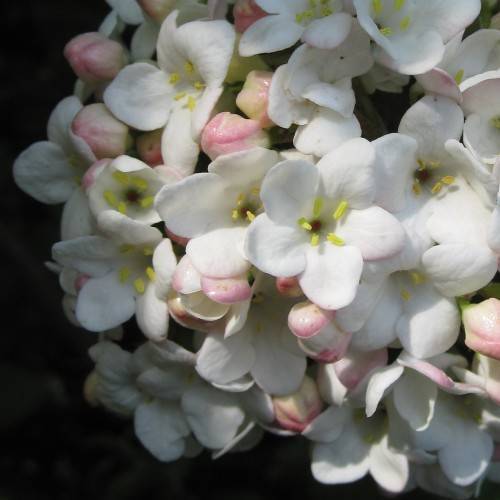
burkwood viburnum
Viburnum burkwoodii
Cycle:
Perennial
Watering:
Average
Hardiness Zone:
4 - 8
Flowers:
Flowers In Spring
Sun:
Full sun,part shade
Fruits:
Fruits Ready In
Leaf:
Yes
Growth Rate:
Low
Maintenance:
Low
Care Level:
Medium
watering
Burkwood viburnums should be watered thoroughly every 1-2 weeks, enough to moisten the soil to a depth of 6 inches. They prefer moist, well-drained soil and will become stressed if left overly dry. In periods of lengthy drought, hand-watering with a garden hose may be necessary to ensure the plant has sufficient water. Water should be applied directly to the root zone and not on foliage to help reduce the risk of disease.
sunlight
Burkwood Viburnum (Viburnum burkwoodii) is a deciduous shrub that is native to North America and grows best in full sun or partial shade. Its moderate growth rate means it can reach heights of up to 16 feet when mature. It requires 6 to 8 hours of full sun per day and should be planted in a well-drained soil. When first establishing the plant, it may need more frequent irrigation, but once established, it should not need supplemental watering. Pruning should be done to control size and encourage more blooms or form.
pruning
Burkwood viburnum should be pruned in either spring or early summer. Pruning in late summer can damage the fruit buds for the next season. To begin pruning, remove any dead, damaged, or diseased branches. Then thin the shrub by cutting out some of the oldest branches at ground level, as many as 1-third of the shrub. This will help the shrub become denser and more bushy. If desired, some of the longer branches can be pruned to a desired length. Be sure to cut just above a lateral branch, or the pruning will create an undesirable "lion's tail" look. Finally, cut back the tops of the branches for a more desired shape. This will encourage vigor and increase flowering for the next season.
